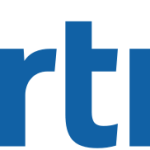- Industry: Consulting
- Number of terms: 1807
- Number of blossaries: 2
- Company Profile:
Gartner delivers technology research to global technology business leaders to make informed decisions on key initiatives.
A contact center system is a computer-based system that provides call and contact routing for high-volume telephony transactions, with specialist answering “agent” stations and a sophisticated real-time contact management system. The definition includes all contact center systems that provide inbound contact handling capabilities and automatic contact distribution, combined with a high degree of sophistication in terms of dynamic contact traffic management.
Contact center systems are defined as follows:
They are software applications typically residing on an adjunct server or switch-based processor system, located either at a customer’s premises or at a third-party site. For routing phone calls, the system providing the call control may be an application-specific resource or may support a dual-function PBX/automatic call distributor installation. Newer architectures will support contact center call routing business rules on an “application server” which can direct and monitor calls through a telephony gateway using SIP or other softswitch protocols. The infrastructure may also be provided as an on-site “managed service;” as an off-site, dedicated “hosted service” solution; or as an off-site shared resource “software as a service” (SaaS) solution.
They provide intelligent routing of an incoming communication (that is, a call, e-mail, text chat, Web collaboration or facsimile) to the appropriate resource (that is, agent-assisted or self-service) through an algorithm more sophisticated than simple hunt groups.
They provide the ability to generate historical activity reports (covering at least 30 days) as well as supervisory capabilities including, but not limited to, real-time monitoring and reporting of a system’s workload, agent status lookups, viewing the number of contacts in the queue, and the ability to change agent status.
Industry:Technology
Contact center infrastructure includes software and hardware designed to run a contact/call center. This includes automatic call distributors, integrated voice response units, computer-telephony integration, and universal communications or universal queue management, integrating any of these multiple channels for a call/contact center.
Industry:Technology
A contact center supports customer interactions across a range of channels, including phone calls, email, Web chat, Web collaboration, and the emerging adoption of social media interactions, and is distinct from telephony-only call centers. Although contact centers support more than one channel, they do not necessarily involve the use of universal queuing. Instead, they may support multiple channels but use separate systems and, in some cases, business processes to do so. Key underlying technologies include automatic call distribution, computer-telephony integration, interactive voice response and outbound dialers.
Industry:Technology
Consumerization is the specific impact that consumer-originated technologies can have on enterprises. It reflects how enterprises will be affected by, and can take advantage of, new technologies and models that originate and develop in the consumer space, rather than in the enterprise IT sector. Consumerization is not a strategy or something to be “adopted.” Consumerization can be embraced and it must be dealt with, but it cannot be stopped.
Industry:Technology
Consumer-generated media (CGM) refers to any written, audio or video content created by end users, using basic or semiprofessional tools. CGM can include one-consumer-to-many applications such as photo sharing, publishing via blogs, podcasting, social network videoblogging and the like, as well as “auteurs” looking to get their content to an audience.
Industry:Technology
Consumer Web mashups are lightweight, composite applications built using consumer Web-based mashup infrastructures and consuming publicly available consumer Web resources. Consumer Web mashup infrastructure providers claim to target average Web users, but most active use is by amateur developers and hard-core hobbyists.
Industry:Technology
Voice service revenue and connections are made up of the sum of PSTN and voice over Internet Protocol (VoIP) connections and their associated revenue. For clarification, IP-based voice “virtual” connections (VoIP) are those calls delivered over a broadband Internet connection or other IP network. A VoIP virtual line needs to be associated with a telephone number and be identifiable to the consumer as a VoIP-grade service. A VoIP line and PSTN line are not mutually exclusive — indeed, most consumers with VoIP lines still have a PSTN line.
Industry:Technology
Consumer voice access lines is the sum of PSTN (including consumer channel counts for consumer Integrated Services Digital Network (ISDN)) and VoIP connections. Note that “virtual” VoIP connections used for voice communications, usually via a broadband connection to the Internet or some other IP network. The “virtual” line has to be associated with a telephone number that allows it to receive incoming PSTN calls.
Industry:Technology
Consumer telepresence is a set of technologies that enables users to feel they are “present” during videoconferences. Telepresence has the potential to break down the consumer dissatisfaction that has been prevalent with video telephony. Telepresence solutions share common traits, including: life-size (or near life-size) image displays, high-quality audio, full-motion video capabilities and a minimal camera-to-eye angle to provide virtual eye-to-eye contact. Telepresence systems are being driven by the enterprise market through companies such as Cisco, HP and Polycom. Consumer telepresence creates a greater challenge than its enterprise counterpart. While an enterprise system can cost hundreds of thousands of dollars and may require an environment that is ad hoc, a consumer system will need to embrace a variety of environments in which the majority of costs can be absorbed in other home devices, such as high-definition television (HDTV), broadband and home theater sound systems.
Industry:Technology
Consumer telematics are end-user-targeted vehicle-centric information and communication technologies (vehicle ICTs) and services. Network-enabled cars for consumers provide in-vehicle services, such as emergency assistance, Global Positioning System (GPS) navigation, traffic information, local search (for example, for charging stations or restaurants) and concierge services.
Industry:Technology
